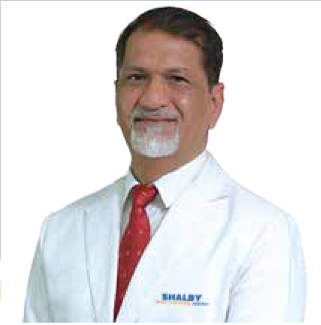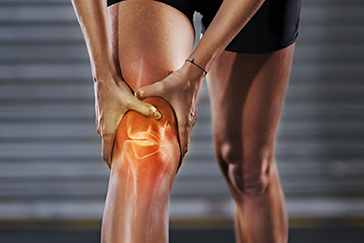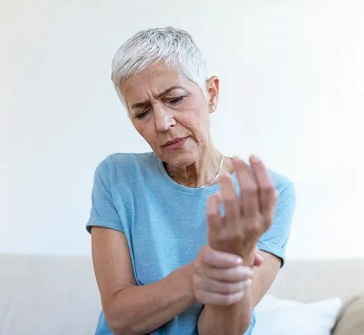 Book Appt.
Book Appt.
 Call Now
Call Now


The aim of physiotherapy and rehabilitation is to improve the quality of the patient’s life by enhancing their mobility, joint flexibility, range of motion and strength. It involves various exercise regimens and therapeutic sessions that aid in the swift and holistic recovery of the patient. Every plan is personalised to meet the special needs and requirements of the patients, with the aim of restoring function and helping them get back to a normal life.
Physiotherapy and Rehabilitation play a vital role in almost all orthopaedic treatments. Physiotherapy involves a wide spectrum of physical activities and exercises that help to restore the structure and function of the affected body part to maximum capacity. It is usually recommended for patients who are experiencing a limited range of motion owing to an injury, trauma, degenerative joint disease, surgery or any other medical condition. Physiotherapy works by identifying the underlying factors that are affecting mobility and targets them through a personalised exercise programme.
Rehabilitation is central to every orthopaedic recovery programme, especially those following a trauma or surgery. It uses various non-surgical approaches to address the musculoskeletal limitations of the patients and focuses on alleviating pain, swelling and other related symptoms. Rehabilitation may be recommended for conditions affecting the bones, muscles, ligaments, joints and other parts of the musculoskeletal system.
What are the most common physiotherapy techniques?
Some of the most common physiotherapy techniques include:
â— Electrotherapy, which uses special electrodes to deliver electrical stimulation for enhancing mobility and range of motion
â— Exercises, which are personalised to address specific problems like reduced mobility, limited range of motion, stiffness and reduced circulation
â— Soft tissue mobilization, which involves special massages to alleviate pain and swelling
â— Cryotherapy and heat therapy, which help to relieve stiffness and soreness with the application of heat or cold to the affected area
â— Kinesio taping, which helps to enhance stability without interfering with the range of motion
What does an orthopaedic rehabilitation programme involve?
An orthopaedic rehabilitation programme is a comprehensive plan that involves the following:
â— PT or physical therapy, which predominantly focuses on enhancing strength and mobility via strength training, massage, heat/cold therapy, electrical stimulation, stretching and similar means
â— OT or occupational therapy, which aims at restoring your ability to perform normal day-to-day activities by breaking down tasks and using adaptive equipment
â— Sports rehabilitation, that primarily aims at helping athletes and sportsmen get back on the field, following a sports injury.
What are the most common types of orthopaedic rehabilitation?
Depending upon the injury and the body part involved, orthopaedic rehabilitation can be of the following types:
â— Ankle rehab for conditions like sprain, Achilles tendon fracture, or after undergoing ankle replacement
â— Back rehab for conditions like spinal fractures, and herniated discs, or after undergoing a back surgery
â— Hip rehab for conditions like fractures or post undergoing hip replacement
â— Knee rehab for conditions like dislocation, ACL, or after a knee replacement surgery
â— Shoulder rehab for conditions like rotator cuff tear or following a shoulder replacement
â— Wrist rehab for conditions like carpal tunnel syndrome
SHALBY Sanar International Hospitals provides extensive medical procedures backed up with our state-of-the-art technology and a team of highly qualified & experienced clinical experts.



Life Transformed: Mr. Blojah Felix Journey to Pain-Free Living | SHALBY Sanar

Pain-Free Living After 6 Years: Knee Replacement Success Story | Dr. Rohit Lamba

Bilateral Total Knee Replacement by Dr. Vikram Shah | SHALBY Sanar International Hospitals

Remarkable Recovery Story: Hip Replacement for Non-union Fracture

Incredible Recovery Story: Bilateral Knee Replacement Transformation

Knee Replacement Surgery by Dr. Rohit Lamba: 60-Year-Old's Remarkable Recovery

Renewed Hope: Successful Hip Replacement Surgery Transforms Iraqi Patient's Life

Exploring a Case of Revision Knee Replacement: Insights from Dr. Rohit Lamba

Triumphant Journey: Ms. Fatima, 69, Triumphs Over Revision Knee Replacement Surgery

Leaving the crutches behind – Riyaz, 43, gains confidence after a successful Hip Replacement Surgery

Transformative Total Knee Replacement Surgery: A New Lease on Life for 48-Year-Old Ramesh

Miraculous Recovery: 17-Year-Old Kenyan Overcomes Osteosarcoma with Mega Prosthesis Surgery

Mr. Omar Faruk's Remarkable Knee Recovery: ACL Reconstruction Success Story

Mrs. Vijay Luxmi's Remarkable Knee Replacement Journey

Umidjon, 36, from Uzbekistan shares his gratitude for a successful total hip replacement surgery

Ms. Mohsin from Iraq shares her gratitude for a successful Computer Navigated Total Knee Replacement

A Total Hip Replacement surgery gives Ms. Barry from Ghana, the ability to walk again.

Dr. Rohit Lamba talks about a successful Hip Replacement Surgery carried out on an Iraqi patient
Our doctors pen down their research findings and experiences from time to time. Their words provide deep insight into the latest techniques, technologies and other advancements in healthcare. It provides expert answers to all kinds of health questions for real-life issues.
VIEW ALL.png)
.png)



Since the day of its foundation, SHALBY Sanar International Hospitals is committed to provide comprehensive healthcare services. It regularly organizes awareness programs in its premises and encourages outdoor healthcare activities and camps with an intent to put focus on preventive healthcare.
VIEW ALL